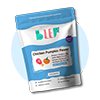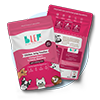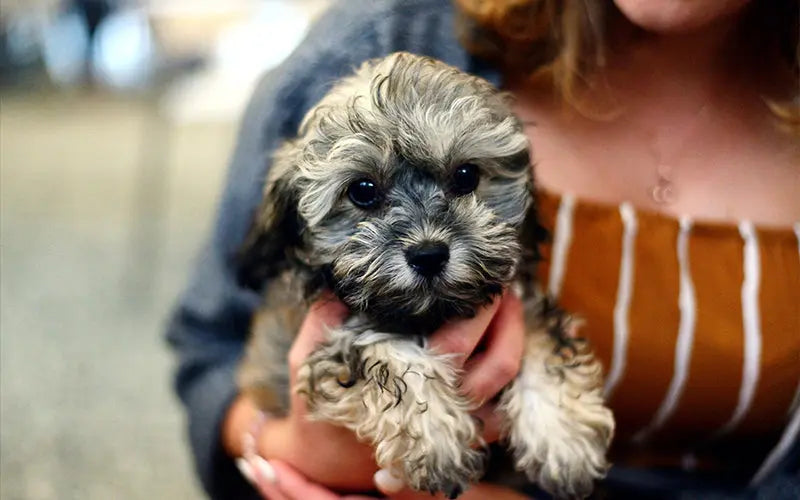Travelling with your dog can be one of the most magical experiences. However, as every pet parent who has taken their dog along while travelling will tell you, it requires a lot of patience, perseverance, and elbow grease. Hassles can come from any side your pup may be averse to the change in scenery, you may not get confirmation on your tickets till the last minute, and you may even meet some unkind people or officials on the way. But, ultimately, having your furry friend close to you will make it all worth it.
So buckle up while we tell you all that there is to know about travelling with your dog — by the Indian Railways, by air, or by car. Most importantly, let us familiarise you with all the prep you need to do before you set out for your journey with your pup.
The First Steps When You’re Thinking About Travelling with Your Dog
Before anything else, you need to be very sure that you want to travel with your dog. All of us love the idea, sure, but it comes with significant costs, and you also need to have a considerable amount of time on your hands. If you’re only travelling for a few days, the cost, the effort, and the strain on both you and your dog are not worth it.
Next, you need to talk to your vet and get them to assess your dog. Apart from the medical aspect, they need to be temperamentally sound to travel as well. Many dogs may not be able to take the mental and physical strain of travelling. If they give you the go-ahead, then you can start with the planning.
How to Prepare When Travelling with Your Dog?
The largest battle to win before travelling with your dog will actually begin months before you even set your foot out of the door. It will be a battle of wills between you and your pup. Dogs are highly territorial and, as such, don’t like leaving their turf. They don’t have the concept of wanderlust (at least, not on record!) or of the hills/sea calling them; they’re perfectly happy in their own familiar space.
So, they will have to be trained to do some of the things they will need to do on the journey —
Trained to be away from you: To dogs, you’re their guardian. Whenever they are scared or confused, especially in an alien space, they will look for you. If they don’t find you there, that can cause them significant stress. Therefore, it is best to start training them with the ‘stay’ or ‘wait’ command at home.
Trained to remain in their crate without fear: Crate training is essential if you plan to travel with your dog, because you may need to use one at one point or another — in the Brake Van dog box of a train, the cargo hold of a plane, or even in certain hotel rooms during road trips. Try to put familiar bedding, toys, and items that are loved by your dog inside the crate. This way, they will associate the crate with familiarity and comfort.
Trained to be well-behaved in an environment with overstimulation: Dogs may get overwhelmed with the number of people they see at the railway station, airport, or pit stops. So, it is a good idea to ramp up their socialisation training and familiarise them with crowds. You can start by taking your pup to a nearby market or unfamiliar park. Keep their muzzle on while they are getting used to it.
Trained to eat food/sleep without you: There are many dogs who are used to eating or sleeping with the family, or are even handfed. If your dog is used to this, you may have to start training with the basics. Slowly get them used to eating and sleeping by themselves. It may be difficult to do, because they do not understand the intentions. But keep at it till they get comfortable.
Trained to be on their leash: Many dogs do not like being on their leash. This is not surprising, because it can be restrictive. However, you will need to train them to be okay with being on the leash for extended periods, especially if you’re going on a vacation with your dog. Try out different styles and choose the kind of leash that your dog likes the best (at least, comparatively!).

What Essentials Should You Pack When Travelling with Your Dog?
The first time, you would feel like taking every single thing that you find marketed towards pet travel. However, you will probably not need even half of all those things. But you can only find out what you actually need once you’ve travelled for the first time, so don’t panic. Observe your dog and the impact of the journey on them and adjust your ‘essentials’ list accordingly.
Here are some handy suggestions for your dog —
-
A collar with a prominent dog tag, leash, muzzle and harness that they are already familiar with.
-
A dog crate that they have already been trained in. Make sure it adheres to the size restrictions, in case you’re flying. Add ‘live animal’ stickers and a tag to this as well.
-
A soft, portable dog bed that they are comfortable with and a few sheets to spread on the floor wherever needed.
-
Travel-friendly food, an anti-skid dog bowl, a portable water dispenser, and a slow treat dispenser.
-
Chews and chew toys, both soft and hard.
-
A couple of their favourite toys or objects that make them feel at home. No squeaky toys, though, in case they disturb the other passengers.
-
A good quantity of pee pads, pet-friendly wipes, thick tissue rolls, and newspapers, in case there are any cleanups due to accidents.
-
Poop scoop and garbage bags for the pee/poo walks.
-
Big and small towels, a jacket or a thick sheet in case they get chilly because of the AC.
-
Daily meds and a first aid kit assembled according to your vet’s recommendations.
Here are some handy suggestions for you —
-
Your dog’s health records, including vaccination reports, any prescriptions, or other medical documents.
-
The health certificate from the vet that signs off on your dog travelling.
-
Pet registration documents, if applicable.
-
Extra photocopies of all documents, both yours and your dog’s.
-
A change of clothes, in case your dog has an accident on you.

Travelling with Your Dog via Train
Here is a quick run-down on the steps you need to follow to travel with your dog using the Indian Railways. There are two ways of travelling on the train — in a cabin/coupe or in the Break Van:
Cabin/Coupe:
-
Get First Class or 1A Class tickets well in advance. Pets are allowed only in coupes (2 seats) or cabins (4 seats). If you’re travelling alone, you’ll have to get at least two tickets to get a coupe.
-
Send an application to the railway office a week or two before the journey with the PNR number, date of travel, and the details of your pet.
-
Get a ‘fit to travel’ certificate from your vet 48 hours before the date of travel.
-
Reach 4-5 hours before your departure time and meet the station master to request a coupe/cabin once more. Then go to the ‘Luggage Booking Room’. Here, you’ll get the boarding ticket for your dog. Then, you’re all set to board the train.
Break Van:
-
Book a regular ticket for yourself. Have all of your dog’s paperwork ready.
-
Go to the station 4-5 hours early and get your pet’s ticket from the ‘Luggage Booking Room’. Your dog will be booked as 'luggage'.
-
Go to the luggage-cum-brake van and put your dog inside the dog box. There’s only one, and it’s on a first-come-first-served basis, so this method is not fullproof.
-
You won’t be able to travel alongside your dog, but you can visit frequently. You may even be allowed to walk your dog on long halts. You can collect your dog on arrival.

Travelling with Your Dog via Plane
Air travel is the most complicated way of travelling with your dog but also the fastest. So, here is an overview of the steps you need to follow to travel with your dog on a plane —
-
Check which airlines offer pet travel services. In India, Air India and Akasa Air are some of the options.
-
Now, read the guidelines that are laid down by the airlines. Usually, dogs under 7kgs (including carrier) may travel in-cabin alongside you, provided the carrier fits beneath the seat in front of yours. Pets above that must travel separately in cargo. It is best if the carrier is IATA-approved.
-
Choose the flight you want to get on. Direct flights on weekdays are your best bet. Also, depending on where you’re travelling, choose the months with milder weather to cause less stress on your dog.
-
Get on a call with the airlines, as there may be restrictions on how many dogs can travel in each flight. If the airline confirms that the flight you are looking at has space for your dog, buy your ticket. Get your tickets well in advance.
-
Get a ‘fit to travel’ certificate from your vet and make sure all their health and vaccination documents are up to date. Keep several photocopies of everything.
-
Arrive 4-5 hours early on the day of your flight and follow all the instructions that your air travel service provider gives you.
-
Put puppy pee pads inside the dog carrier in case of accidents. Apart from that, feed them a light meal 5-6 hours before boarding, and give small amounts of water before travelling. It is best if they pee/poop before the flight, but if not, the puppy pee pads will help.
-
Make sure your dog has some comfort items inside the carrier/crate, especially if they are in cargo. It is best to not give them any relaxers, because that can be dangerous due to pressure changes. However, consult your vet for advice.
-
Make sure your dog and the crate have tags that contain your contact information.
Travelling with Your Dog via Road
The easiest way of travelling with your pup is the car. This is because the schedule is in your control, there is lots of space, you can stop anytime you like, and your pup is probably already used to travelling in a car. However, it is still best to keep some things in mind when you’re embarking on a road trip with your dog —
-
Keep the meals light so that there is no motion sickness or nausea.
-
Plan your stops in advance, and check with the hotels/resorts about your dog staying with you. Different hotels may have different guidelines.
-
Keep plenty of time in hand; you may need to stop frequently for a pee/poop break or just for stretching.
-
Getting a carrier is always a good idea, especially if you plan on making pit stops.
-
Do not change your dog’s diet too much, in case it causes gut issues like diarrhoea or vomiting.
-
Always keep them on a leash whenever you get out of the car.
-
Carry some familiar toys/objects and a pet first aid kit.
-
Make sure your dog is secured inside the car. They love to poke their head out of the window, so this is crucial.

How to Prepare Your Dog Just Before the Journey?
-
Feeding: Feed your dog a meal 5-6 hours before a trip, no matter how you’re travelling. Plane travel is quicker, so you can probably feed them again after landing. With train and car travel, stick to their meal routine, but make the meals lighter. You can feed them small snacks and treats periodically if they refuse meals.
-
Relieving: Take them for a pee/poop run a little before departure time if you’re travelling by plane and train. If they don’t do their business, don’t panic. The puppy pee pads will help. Make sure to get the odour-eliminating kind. On a road trip, you can just stop periodically.
-
Calming: The best way to keep your dog calm during the ride is to exhaust them, either mentally or physically. While it sounds harsh, exhaustion will help them sleep off some of the anxiety and unfamiliarity and be better for them, all things considered. Take them on a long walk before departure and play simple games with them to keep them engaged.
Looking to explore more healthy treats and care tips for your furry friend? Check out our other guides like Can Dogs Eat Apples?, Can Dogs Eat Blueberries?, Dog Food for Weight Loss, Raw v/s cooked meat for dogs, Home Remedies to cure tick fever, Finding Good Dog Food in India, How many times should I feed my dog?, Things you should do to keep your pet healthy, Types of Dog Food, and How Prebiotics and Probiotics can improve your dog's digestion. Each guide is designed to help you make better food choices for your dog because the right diet is what gives you a happy and thriving pup.
Resources:
https://theboholiving.com/how-to-travel-with-your-dogs-by-train-in-india-a-detailed-guide/
https://whenonabreak.com/2021/09/13/train-travel-what-to-pack-for-pet-dogs-train-travel/
https://whenonabreak.com/2021/09/13/train-travel-how-to-travel-with-your-pet-dog-in-indian-railways/
https://www.akc.org/expert-advice/travel/puppys-first-flight-how-to-prepare/
https://www.cesar.com/dog-care/pet-travel/12-tips-for-flying-with-your-dog
https://www.airindia.com/in/en/travel-information/first-time-flyers/carriage-of-pets.html
https://www.akasaair.com/information/pets-on-akasa
https://www.realgirlreview.com/flying-with-pets-step-by-step-guide/












